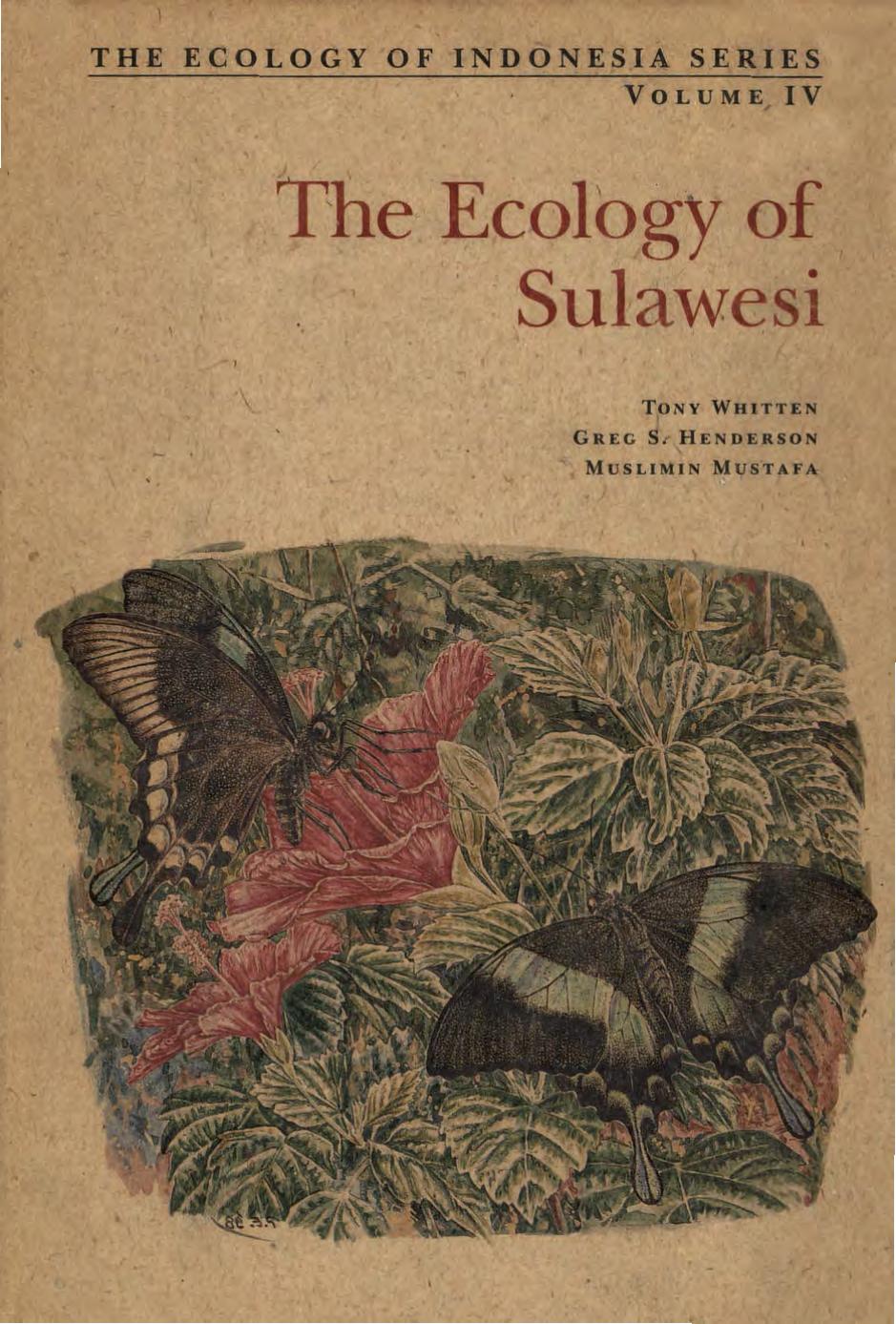Ecology of Sulawesi by Tony Whitten & Greg S. Henderson

Author:Tony Whitten & Greg S. Henderson [Whitten, Tony & Henderson, Greg S.]
Language: eng
Format: epub, pdf
Tags: nature, ecology, Travel, Asia, Southeast, Special Interest, Ecotourism, Ecosystems & Habitats, Forests & Rainforests, Regional
ISBN: 9781462905072
Google: Q__PAgAAQBAJ
Publisher: Tuttle
Published: 2012-06-19T22:13:57+00:00
Figure 5.34. Pseudoscorpion Megachernes grandis from the fur of a rat.
After Durden 1986
The ground pigeons Gallicolumba trisligmata, Chalcophaps indica and C. stephani are shy and little is known of their habits, but they appear to supplement a fruit diet with insects from the forest floor.
The other major group of animals on the forest floor are the rats such as species of Rattus, Maxomys, and Paruromys. In Tangkoko-Batuangus Reserve it has been estimated that they live at a density of about 20/ha (Anon. 1980). Studies of forest rats in Peninsular Malaysia found that the diameter of the lifetime range of individual rats was 250-500 m (equivalent to 0.05-0.2 ha) and that a 'lifetime' for a rat was an average of only 3-6 months (Harrison 1955, 1958). Some species are not confined to the forest floor but also climb.
The rats of the forest floor also support an interesting assemblage of parasites among their fur. One particular Musschenbroek's rat Maxomys musschenbroekii caught in the Toraut forest was infested with no less than 129 mesostigmatid mites, 7 astigmatid mites, 4 ticks, 79 sucking lice and, most interestingly, three pseudoscorpions (fig. 5.34) (Durden 1986). Pseudoscorpions usually live in or on the soil. They were first described from a living mammal when a new genus and species Chiridiochernes platy-palpus, 3 mm long and morphologically adapted for life in fur, was found on a summit shrew rat Bunomys penitus on Mt. Lompobatang in 1969 (Muchmore 1972). This pseudoscorpion, and those from Bogani Nani Wartabone National Park, are incapable of feeding directly on mammals and probably prey on the smaller mites.
Different groups of rat parasites encounter their hosts in different ways. Most fleas and the larger mites are common in rat nests, but sucking lice do not form a reservoir in the nest, while ixodid ticks and chiggers search for their hosts in the forest. These differences in ecology are reflected in the rate of reinfestation for the different groups (table 5.9; fig. 5.35). The figures show a remarkable consistency in the composition of the parasite fauna, indicating that the relative numbers are dictated by conditions on the rat rather than simply by chance.
Parasites are defined as any organism that is intimately associated with, and metabolically dependent upon, a host organism for the completion of its life cycle, and which is typically more or less detrimental to the host (Lincoln et al. 1982). They are to some extent similar to herbivores for these too depend on 'host' plants for survival and cause the plants stress. Even so, there remain a number of subtle differences (table 5.10).
Frogs and toads27 are conspicuous components of the ground community and they feed on termites, small flies and other invertebrates. When toad tadpoles hatch from pools on the forest floor they are by no means cryptic; instead, they shoal together, indicating perhaps that they are distasteful to predators. At least one of the narrow-mouthed toads Oreophryne celebensis is found in the lowlands. Its eggs are laid not in water but in moss on tree trunks, hollow old tree fern trunks, cavities in ant-plant stems, etc.
Download
Ecology of Sulawesi by Tony Whitten & Greg S. Henderson.pdf
This site does not store any files on its server. We only index and link to content provided by other sites. Please contact the content providers to delete copyright contents if any and email us, we'll remove relevant links or contents immediately.
| Fisheries & Aquaculture | Forests & Forestry |
The Lonely City by Olivia Laing(4746)
Animal Frequency by Melissa Alvarez(4394)
All Creatures Great and Small by James Herriot(4228)
Walking by Henry David Thoreau(3892)
Exit West by Mohsin Hamid(3776)
Origin Story: A Big History of Everything by David Christian(3648)
COSMOS by Carl Sagan(3553)
How to Read Water: Clues and Patterns from Puddles to the Sea (Natural Navigation) by Tristan Gooley(3406)
Hedgerow by John Wright(3272)
The Inner Life of Animals by Peter Wohlleben(3259)
How to Read Nature by Tristan Gooley(3248)
How to Do Nothing by Jenny Odell(3232)
Project Animal Farm: An Accidental Journey into the Secret World of Farming and the Truth About Our Food by Sonia Faruqi(3174)
Origin Story by David Christian(3145)
Water by Ian Miller(3126)
A Forest Journey by John Perlin(3026)
The Plant Messiah by Carlos Magdalena(2881)
A Wilder Time by William E. Glassley(2817)
Forests: A Very Short Introduction by Jaboury Ghazoul(2790)
